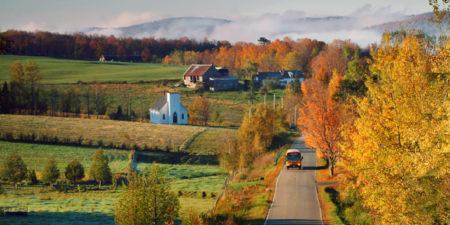Welcome to the second reading list post of 2022! While this is still mostly a ‘reading list,’ I’ll also be including some TV shows and movies in the upcoming months. This month features four books and one movie. Read on below for the list, and let me know what you’ve been reading (or watching) lately!
Page 49 of 117
So, a few readers know I grew up in rural southern Indiana. The politics out there aren’t great. I mean, really not great. It’s been a bastion of various kinds of far right activity for some time. And it stands in well enough for the rural Midwest as a whole. It’s a bit more southern than, say, rural Iowa. But the politics are close cousins.
At the same time, lots of people – especially liberals – hold various misconceptions about life and politics in the rural Midwest. The truth of the matter is that there’s quite a bit of diversity of thought and opinion in the rural Midwest. Liberals miss that part.
Welcome back to the Corporate Politics 101 series! In my previous post, I updated the infamous Peter Principle for the 2020s. Whereas employees used to rise to their level of incompetence, now they leave and perform the role badly for a different company! Project managers and middle managers unite…and become lateral hires.
In this post, I’ll look at a corollary to the previous one. Since lots of bad managers hop ship to a different company, competence tends to drop as one looks up the corporate hierarchy.
I think quite a few old timers know about the Peter Principle. But for anyone who doesn’t, the basic idea is that people keep getting promoted for doing a good job until they get to a level in the corporate hierarchy where they can’t do a good job. And so, they stagnate at that level. Stated simply, the Peter Principle says that people ‘rise to their level of incompetence.’
Neat trick, right?
Does it still work in the 2020s? Sort of. The major difference now is that people rarely stick around at the same company long enough to fulfill the Peter Principle. At the very least, they spend only a few years at their level of incompetence. Maybe they stick it out for 5-10 years. And then they make a parallel move to a new company!
That shows the need for an updated Peter Principle. When people hit their level of incompetence, they go to a new company and perform the job incompetently over there.
What’s fun about today’s corporate world is that HR plays directly into this. By requiring years of experience in a job to get hired into that job, HR discourages good employees from applying for a promotion into a job they might do well. Instead, they hire experienced, but mediocre, middle managers and project managers.
Go figure.
Image Source
Every now and then, I blog about political and movement strategy. Those posts hit certain themes. I’ll hit those themes here, too. But I hope to do so in a fresh way. So, I’ll start with a claim: ‘Bark at the moon’ is a terrible political strategy. In fact, it’s not a political strategy at all.
It’s certainly not a strategy when it comes in the form of social media slacktivism. But it’s also a non-strategy in its more sophisticated forms.
Continue reading




